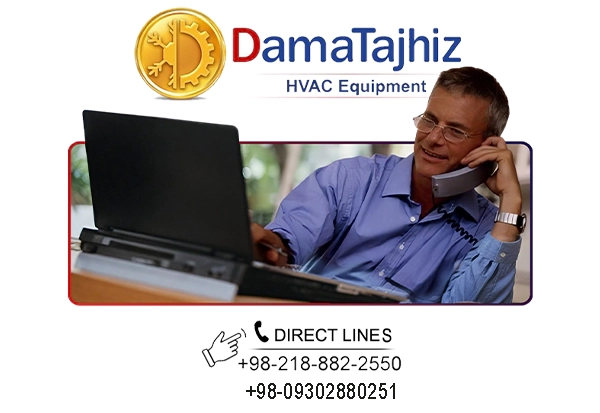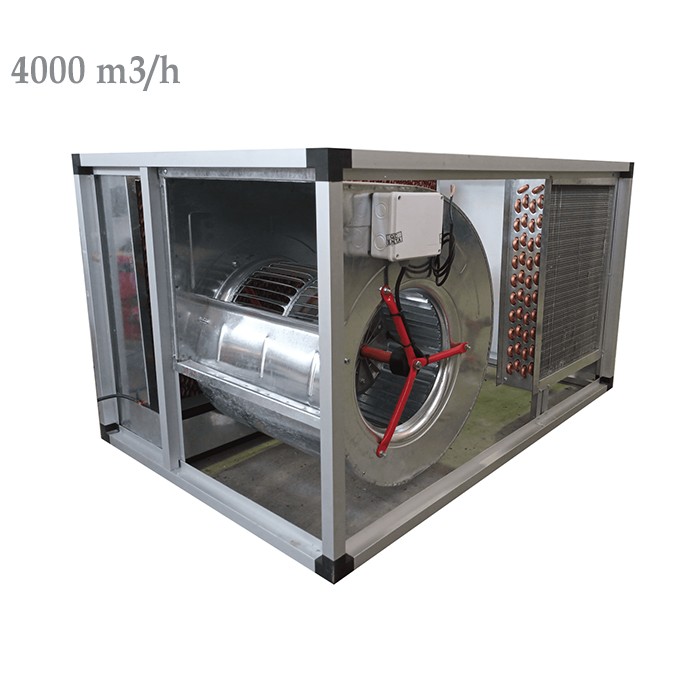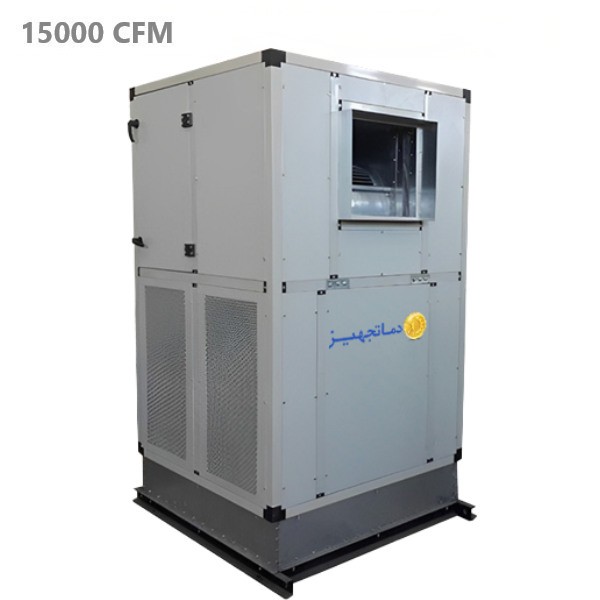Zent
Zent is a heating and cooling system designed to operate efficiently under Iran’s climatic conditions in most provinces (where the relative humidity during summer is below 40%). Below, the selection method, technical specifications, and prices of residential and industrial Zent units are presented.
Professional Guide to Selecting and Pricing Zent Units
Zent is a dual-purpose system, abbreviated from “semi-winter / semi-summer,” and features a fully Iranian concept and design.
The cooling and summer operation of a Zent unit is similar to a evaporative air cooler. Equipped with internal components such as an air supply fan, electric motor, cellulose pads, and a water pump, it cools indoor spaces during summer. In addition, it is fitted with a heating coil to supply warm air during winter.
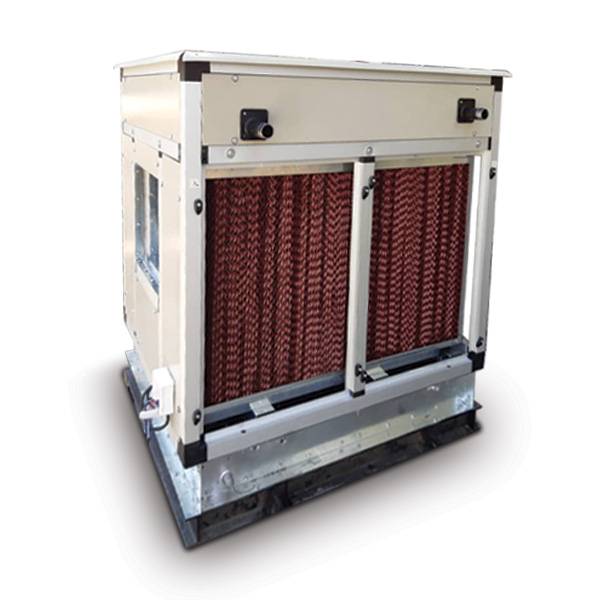
Damatajhiz; Professional Guide to Selecting and Pricing HVAC & Building Equipment (Since 2004)
Cooling Operation of Zent
Zent units, which are generally larger than conventional evaporative coolers, draw in outdoor air during summer and pass it through wetted pads or cellulose media. After the air is cooled (similar to an evaporative cooler), it is delivered to indoor spaces through installed ductwork. Therefore, the Zent must be installed in a location where fresh outdoor air can be supplied through an openable window during summer.
In other words, due to their evaporative cooling mechanism, Zent units—unlike air washers—do not require high-pressure water pumps or multiple spray nozzles. As a result, they are more cost-effective than air washers. It should also be noted that air washers, unlike Zent units, are larger in size, more expensive, and do not use cellulose pads.
Heating Operation of Zent
During winter, after closing the outdoor air intake, the Zent unit draws indoor air and passes it through a hot-water coil supplied by a boiler or wall-mounted heating package. The heated air is then distributed to indoor spaces through ductwork. The hot-water coil is located at the upper section of the unit, just before the air outlet.
Simultaneously with the heating process, humidity can be increased by pumping water from the unit’s sump onto the pads. However, humidification during winter operation is provided as an optional feature.
Advantages of Zent Units
Key advantages of Zent systems include:
- Relatively easy and low-cost installation
- Low electricity consumption due to the absence of a compressor
- Uniform air distribution through ducting and diffusers
- High fresh air supply and effective ventilation in summer
- Installation flexibility in horizontal, vertical, and ceiling-mounted configurations
- Optional humidification during winter operation
- Lower cost compared to other HVAC systems
- Year-round operation with both heating and cooling capabilities
- Simple maintenance and easy access to components, especially in vertical models
- Suitable for small and large spaces such as apartments, offices, workshops, schools, mosques, exhibition halls, factories, and more
Components of a Zent Unit
Main components of a Zent unit include the casing, electric motor, air supply fan, hot-water coil (or electric coil), adjustable air outlets, cellulose pads, and a water pump.
Auxiliary equipment connected to the Zent includes hot-water supply and return piping (from a boiler or heating package), a branch connection to municipal water for supplying the pads, and a complete air supply and return duct system.
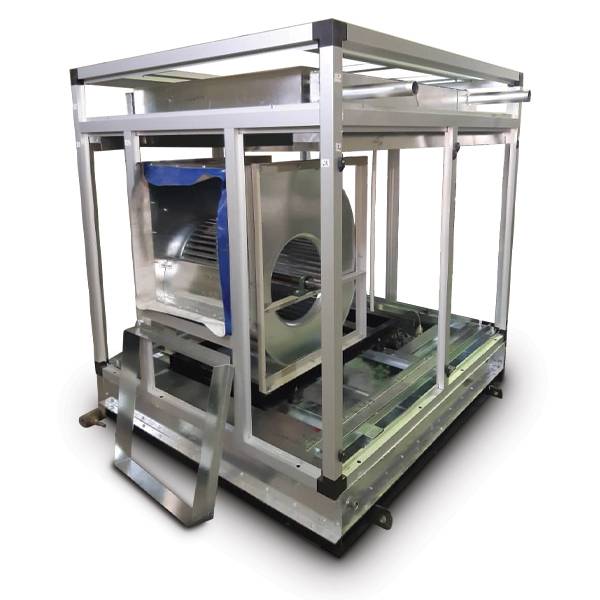
Together, these components enable the Zent unit to simultaneously perform ventilation, heating, and, when required, humidification. The function of each component is described below:
- Casing: Serves as the main structural frame housing all internal components, manufactured from hot-dip galvanized steel sheets resistant to moisture and corrosion.
- Electric motor: Provides the driving force for the fan and ensures stable airflow.
- Forward-curved centrifugal fan: Responsible for air intake and discharge, directing airflow into the distribution ducts.
- Hot-water coil or electric coil: Heats the outgoing air; in hot-water models, heated water flows through the coil, while electric elements perform the same function in electric models.
- Adjustable air outlets: Used to control air volume, direction, and distribution.
- Cellulose pads: Provide an effective evaporation surface for cooling or humidifying the air.
- Water pump: Delivers water from the sump to the cellulose pads to enable evaporative cooling during summer.
- Hot-water supply and return piping: Transfers hot water from the boiler or heating package to the coil and back after heat exchange.
- Municipal water connection: Supplies water to the pads and prevents them from drying out.
- Air supply and return duct system: Transfers fresh air, distributes conditioned air, and connects the Zent unit to indoor spaces.
How Is Zent Capacity Measured?
Zent capacity is determined based on the outlet airflow rate, expressed either in CFM (cubic feet per minute) or cubic meters per hour (m3/hr). In Iranian HVAC projects, cubic meters per hour is more commonly used, while many catalogs list both units.
(Each 1 CFM is approximately equal to 1.7 m3/hr.)
Damatajhiz; Thousands of Products for Thousands of Projects (Since 2004)
Types of Zent Units
Based on design and installation location, Zent units are available in horizontal, vertical, and ceiling-mounted types. In terms of application, they are classified as residential (apartment) and industrial Zent units.
Horizontal Zent
As the name suggests, the horizontal Zent is installed in a horizontal position and is typically used in spaces where floor installation is not possible. It is usually mounted on steel structures, rooftops, or dedicated frames and can be connected to ductwork.
This type is commonly applied in halls, warehouses, commercial areas, and semi-industrial environments where the unit is installed outside the main occupied space.
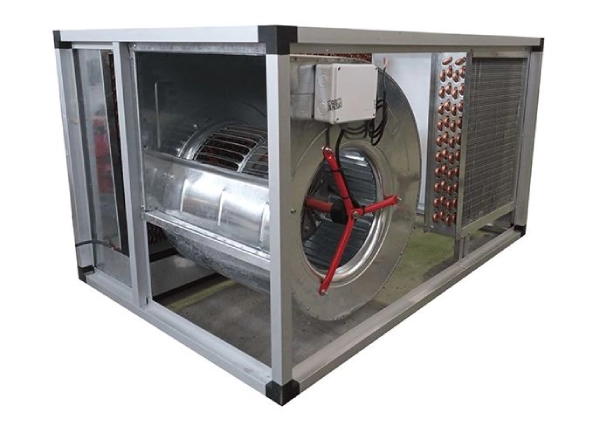
Vertical (Standing) Zent
Vertical Zent units are widely used in large halls, workshops, and environments with limited ceiling installation options. They are floor-mounted and commonly installed in mechanical rooms, service areas, or within industrial halls for direct air delivery.
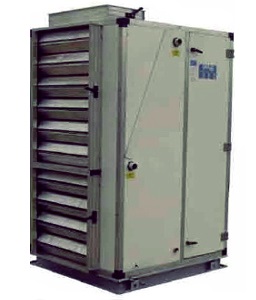
Ceiling-Mounted Zent
Ceiling-mounted Zent units are installed either concealed within a false ceiling or surface-mounted beneath the ceiling, without occupying floor space.
After drawing in fresh and return air, the unit filters and conditions the air and distributes it evenly from top to bottom through ducts or ceiling diffusers, improving ventilation efficiency and thermal comfort.
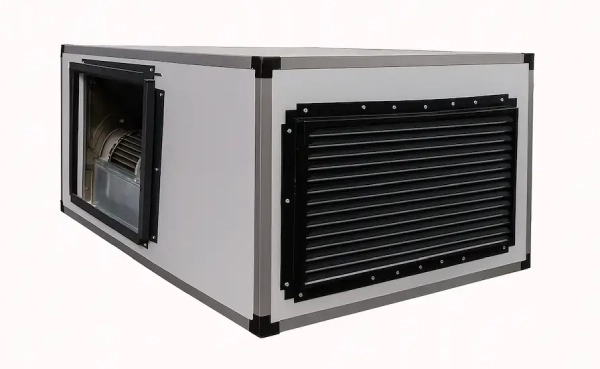
Residential or Apartment Zent
Residential Zent units are designed for housing and office spaces such as large homes, villas, and small offices with low to medium floor areas. They offer lower noise levels and optimized energy consumption compared to industrial models.
The typical capacity range of residential Zent units is approximately 1,000 to 8,000 m3/hr, equivalent to about 600 to 4,800 CFM, covering areas of roughly 50 to 300 square meters depending on ceiling height, occupancy, climate conditions, and required fresh air volume.
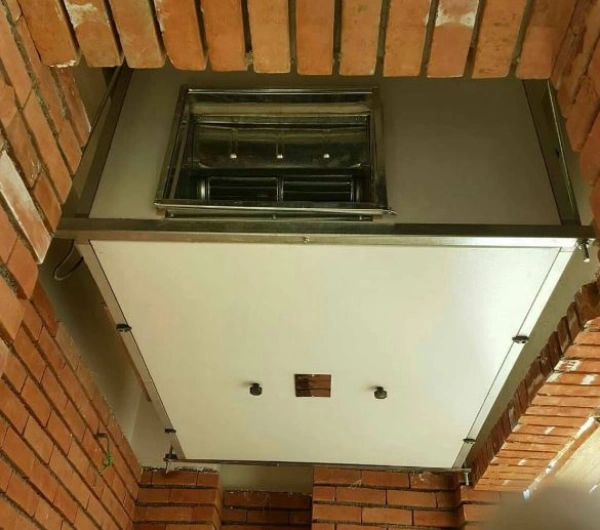
Industrial Zent
Industrial Zent units are designed for large spaces and heavy-duty operating conditions. These systems feature high airflow capacity, powerful motors, and reinforced casings, enabling continuous operation in industrial environments. Industrial Zent units are commonly used in factories, warehouses, sports halls, and spaces that require strong and uninterrupted ventilation, playing a critical role in maintaining air quality and standard indoor temperature conditions.
The airflow capacity of industrial Zent units typically starts at around 10,000 m3/hr and can reach up to 40,000 m3/hr in larger models, which is approximately equivalent to 5,800 to 23,000 CFM.
Depending on ceiling height, these units can cover areas ranging from about 400 square meters to more than 1,000 square meters.
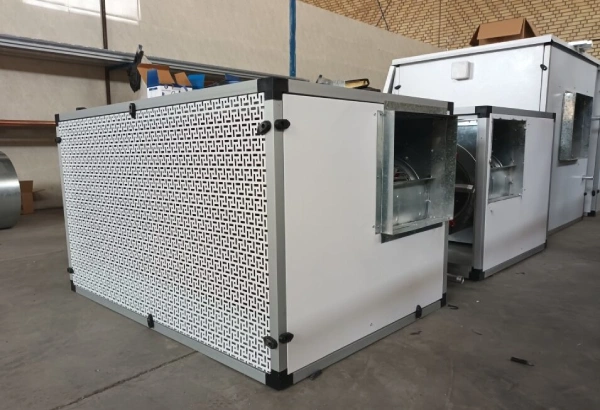
Installation Location Considerations for Different Zent Types
Since Zent units are manufactured and supplied in three configurations—horizontal, vertical, and ceiling-mounted—they can be installed on rooftops, terraces, or beneath ceilings. To improve efficiency and overall performance, it is recommended that the Zent be installed in a covered space that has a suitable window opening to fresh outdoor air. It should be noted that the fresh air intake window is usually kept closed during winter.
Note: If the Zent installation location, similar to the outdoor unit of a split air conditioner, is on a terrace or rooftop, then in order to supply heating during winter, a return air duct from inside the building to the Zent unit must also be installed (in addition to the supply air ducts).
Proper Execution of Zent Ductwork
Another very important point when using a Zent system is the correct implementation of ductwork based on the following factors:
- Performing engineering calculations for the required cooling airflow in summer and heating airflow in winter
- Using a ductilator based on the required hot or cold airflow for each space, appropriate air velocity inside the ducts, and considering the allowable pressure drop in each duct section
- Avoiding 90-degree elbows without observing the standard internal radius, and preventing directional changes greater than 15 degrees along straight duct runs, under the supervision of experienced HVAC engineers and technicians
Damatajhiz; Guide to Selecting and Purchasing HVAC & Building Services Equipment (Since 2004)
Purchasing a Zent Unit
The selection and purchase of a Zent unit are based on the maximum required airflow rate (CFM or m3/hr) for evaporative cooling performance in summer, as well as the heating capacity of the heating coil (kcal/hr) required to provide heating during winter.
Therefore, the first step in selecting and purchasing a residential or industrial Zent is determining the required cooling and heating capacities, along with the dimensions of the installation space. Zent units are manufactured in various types with different cooling and heating capacities, and prior to purchasing, it is essential to accurately assess the area and application of the intended space to ensure correct selection of model and airflow capacity at a reasonable price.
Subsequently, factors such as motor power, fan static pressure, heating coil surface area, unit dimensions, and other technical parameters should also be evaluated.
At Damatajhiz, the first and most reputable specialized center for consulting and purchasing building services equipment, technical specifications and guaranteed prices for dozens of Zent models from reputable brands are provided, all with an 18-month golden warranty and reliable after-sales services to ensure a smart and optimal purchasing experience.
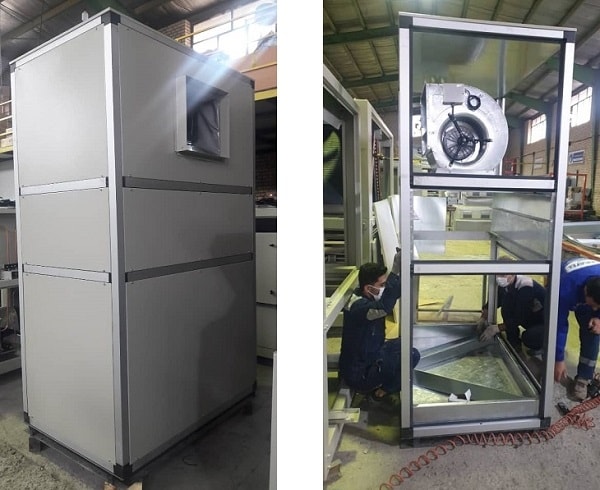
Key Points for Selecting and Buying a Zent
When selecting and purchasing a suitable Zent unit, in addition to considering the required capacity and airflow rate, the following important factors should also be taken into account:
- Unit dimensions to ensure it can pass through doors and be installed in the designated room.
- Installation location inside the building with access to 100% fresh outdoor air during summer.
- Type and level of electrical power supply required (single-phase or three-phase).
- Motor power and maximum fan static pressure to ensure proper airflow through the duct system.
- Heating coil surface area of the Zent unit (number of rows and fins).
- Proper execution of air distribution ductwork based on engineering calculations and using a ductilator.
At Damatajhiz, technical data and guaranteed prices for dozens of residential and industrial Zent models from reputable brands are provided, all with an 18-month golden warranty and reliable after-sales support.
Zent Price
The price of Zent units varies depending on type, capacity, airflow rate, motor power, heating coil surface area, casing thickness, build quality of the cellulose pads, and other factors. Below, the key parameters affecting the price of residential and industrial Zent units are reviewed.
It should be noted that all Zent units offered by Damatajhiz are competitively priced, and customer-required discounts have already been incorporated into these prices.
Damatajhiz; Best Prices and Reputable Brands of HVAC & Building Services Equipment (Since 2004)
Factors Determining Zent Price
The price of a Zent unit depends on multiple factors; therefore, it is not possible to define a fixed price or specific price range. The type of Zent, airflow capacity, and technical specifications are the primary pricing criteria; however, construction details and overall build quality play a decisive role in the final cost:
- One of the most influential factors in Zent pricing is the airflow capacity and volume. As the airflow rate in m3/hr or CFM increases, the unit dimensions become larger and more powerful motors and fans are required, directly increasing the price. This is why the price difference between residential and industrial Zent units is significant.
- Motor power and fan type also have a direct impact on pricing. Using high-quality, powerful motors from reputable brands with higher protection classes improves cooling and heating efficiency and extends service life, but also increases the initial cost. Fan type, static pressure, static and dynamic balancing, and noise level are additional factors affecting price.
- Another important factor is the heating coil surface area and material. A larger heat exchange surface increases heating efficiency. Copper coils with aluminum fins or coils with anti-corrosion coatings are more expensive than standard coils but offer more stable performance and longer service life.
- Casing thickness and overall construction quality also affect Zent pricing. Units manufactured with thicker steel sheets, electrostatic paint, or moisture- and corrosion-resistant coatings are more suitable for long-term operation and harsh conditions, and therefore have higher prices.
- Other factors influencing the final price include the quality of cellulose pads, filter types, level of acoustic insulation, customization options, and auxiliary equipment. Higher-quality components increase the initial price but reduce maintenance and depreciation costs over the long term.
Ultimately, to accurately estimate the price of residential or industrial Zent units, the required capacity, technical specifications, installation conditions, and application type must be thoroughly evaluated. Selecting the right Zent not only reduces initial costs but also improves cooling performance in summer, heating efficiency in winter, ease of operation, and lowers long-term maintenance expenses.
Ordering and Warranty of Zent Units
- At Damatajhiz, within the HVAC section, technical specifications and guaranteed prices for dozens of high-quality residential and industrial Zent models are provided for review and purchase by consultants and project owners.
- If additional information is required to make a better purchasing decision for residential or industrial Zent units, you may contact the HVAC experts at Damatajhiz. Our colleagues are always ready to provide professional support.
- Finally, it should be noted that Damatajhiz, as an official member of the Iranian Association of Heating and HVAC Equipment Sellers, supplies various Zent units, air washers, and air handling units to neighboring countries and the Middle East.
You can order any HVAC and MEP products, including different types of air washers, cooling towers, air handling units, chillers, industrial evaporative coolers, air curtains, burners, cast-iron or steel boilers, heat exchangers, gas heaters, unit heaters, circulation pumps, sand filters, water and fuel storage tanks, and more, from countries such as the UAE, Armenia, Tajikistan, Georgia, Azerbaijan, Turkey, Oman, Pakistan, Turkmenistan, Afghanistan, Kuwait, Bahrain, Qatar, Iraq, and others across Asia, the Middle East, and Europe, and have them delivered to your city (Manama, Baghdad, Karachi, Dubai, Sharjah, Muscat, Riyadh, Abu Dhabi, Kuwait City, Jeddah, Sana'a, and Doha Amman, Sulaimaniyah, Sofia, Kirkuk, Islamabad, Mosul, Erbil, Dushanbe, Aleppo, Damascus, Baku, Beirut, and Kabul) in the shortest possible time. So, contact us by phone call or WhatsApp message through the number: +98-930-288-0251.

"Knowledge Fuels Better Choices"
Registered Trademark and Stewardship Business Licenses Issued by the Union of Virtual Business Association and the HVAC Equipment Industry.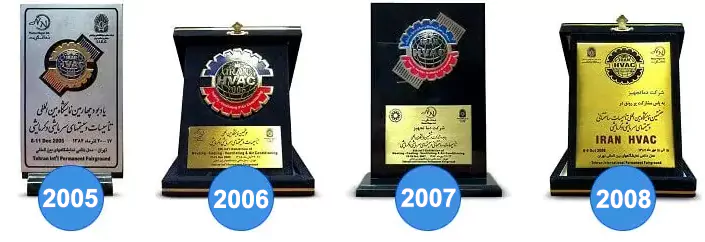
DamaTajhiz HVAC Participation at International HVAC and Construction Facilities Exhibitions Demonstrates its Global Reach and Commitment to the Industry.
We Look Forward to Your Call and the Opportunity to Meet You
SHARE THIS CONTENT TO SPREAD THE KNOWLEDGE
| |
Head Office: No. 463,Talebian Alley,Taleghani St.Tehran,Iran


DamaTajhiz has provided the opportunity to sell and ship specialized HVAC equipment for applicants in the following countries as the first and the most popular online store for selling HVAC equipment (Heating , Ventilation , Cooling , Air conditioning) in the Middle East : Afghanistan – Tajikistan - Uzbekistan – Turkmenistan – Azerbaijan – Armenia – Georgia – Turkey – Iraq – Syria – Jordan – Kuwait – Emirates – Qatar – Oman.
